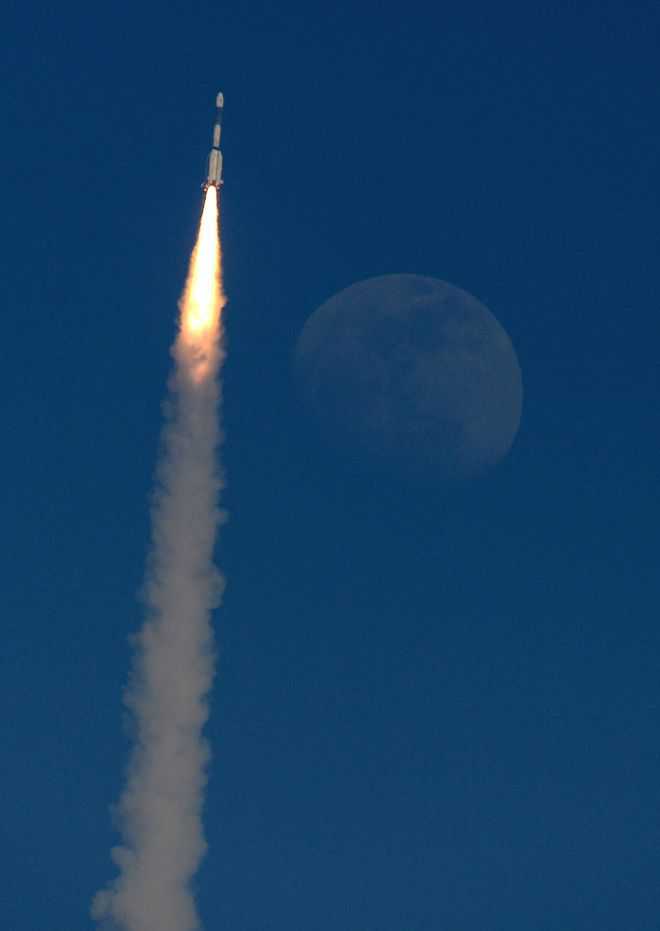
Tribune News Service
New Delhi, December 19
In a development that will provide greater reach to the Indian Air Force and the Army, the Indian Space Research Organisation (ISRO) today launched a military communication satellite, the second one since Rukmini — GSAT-7 — was launched in September 2013.
Besides these two, there are a dozen other satellites that are doing surveillance and sending only pictures and videos.
GSAT-7A will be for the use of Indian Air Force (IAF) and partially for the Army. A communication satellite enables live feed and can connect aircraft flying hundreds of miles away.
The Rukmini is for the use of the Navy and it scans the Arabian sea, the Bay of Bengal and also the strategic choke points like the Straits of Malacca. The GSAT-7A will enable the IAF to interlink different ground radar stations, ground airbase and airborne early warning and control (AWACS) aircraft.
The satellite will also help satellite-control the military unmanned aerial vehicles (UAVs) of the IAF even as the Army (that still awaits its own satellite called the GSAT-7B) will be using 30 per cent of GSAT-7A.
The GSAT 7-A will extend the range of operations of the IAF aircraft by providing real-time pictures of areas not within range.
Launch to open new avenues
- We have several platforms (military word for aircraft) which have capabilities of communication through satellite. The communication through the satellite will be made possible with this launch. —BS Dhanoa, Air Chief Marshal
Touching new heights
- GSAT-7A is a military satellite that will enhance Indian Air Force’s networking ability
- 2,250 kg satellite’s weight, the heaviest lifted by the launch vehicle
- GSLV-F11 is geosynchronous launch vehicle that put the satellite into the intended orbit
- 8 yearslife span of the 35th communication satellite that has been built by ISRO
- 19 minutesafter the lift-off, the GSLV-F11 injected GSAT-7A into the orbit
Its significance
- Will enable IAF to link its ground radar stations, its airbases and ‘airborne early warning and control system’ planes. The satellite may also control IAF’s unmanned aerial vehicles and drones. It is second satellite since Rukmini (GSAT-7) was launched in Sept 2013
